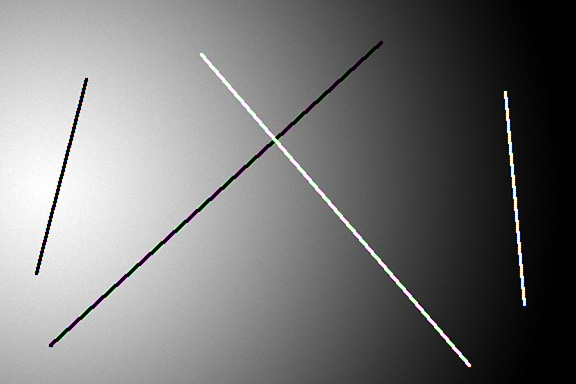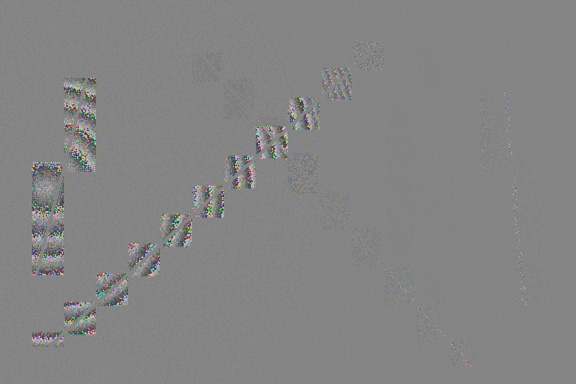I added ideal photon noise to the test of the previous post, assuming that the camera’s ISO dial is set to 100.
Here’s the simulated uncompressed raw file demosaiced by bilinear interpolation:
And here’s the file companded by the Sony compression algorithm and demosaiced in same way, subtracted in a linear color space with Adobe RGB primaries, scaled into the range [0,1], and converted to regular gamma=2.2 Adobe RGB. The scale factor in linear space is 0.0626, meaning that the error artifacts span a range of about 6% of the range of tones in the image.
The noise breaks up some of the error pattern.


Sorry, Jim,
but what you wrote in the first paragraph does not make a lot a sense: “what your program models” cannot depend on what I think about the bit-count of the sensor. I do not think one can handle this problem with an “ideal photon noise”; all the data I saw (like Alexei did [unscientifically] on his blog or you did on your post) hints at the data hitting the compressor having a significant level-dependent noise-reduction.
Since we know that the sensor cooks the data in mid-greys, I’m afraid one must bite the bullet, and
• measure the noise at ISO100 at different gray levels, ;
• hardwire these data into the model;
• do the similations at this particular ISO value.
I suspect that this (and a correction of the systematic error I mentioned in comment to your previous post) would completely change the results of your modelling.
“…all the data I saw (like Alexei did [unscientifically] on his blog or you did on your post) hints at the data hitting the compressor having a significant level-dependent noise-reduction.”
I can’t read Alex’s post because the Google translator is on the blink at the moment. But I take your point; we should look harder at the Sony noise reduction “secret sauce”. Among other things, I’m going to have to go back and look at the raw data with the black point in Rawdigger set to zero, so there is no truncation in the raw conversion.
“but what you wrote in the first paragraph does not make a lot a sense: “what your program models” cannot depend on what I think about the bit-count of the sensor. ”
Ilya, you are right about that. Perhaps I phrased it infelicitously. I assumed that the camera’s ISO dial was set to the point where a one -electron change on the sensor causes a one-count difference in the 13-bit value of the image prior to compression.
Jim